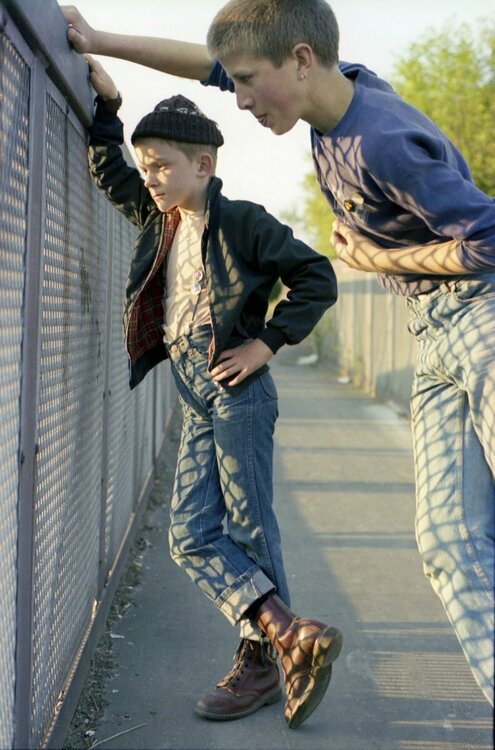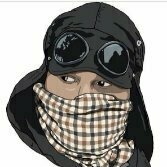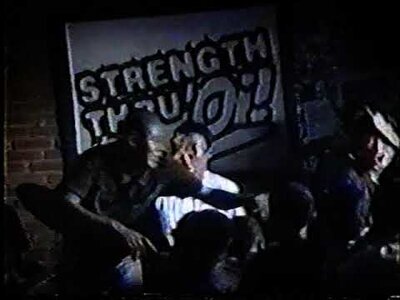This is what working class youth in revolt looks like
If you hear “skinhead” as a synonym for neo-Nazi, think again.
This British-born subculture has a long and varied history dating back to the 1960s when working class mods split from their more bourgeois counterparts. Distinguished by practical clothing—work boots, suspenders—and the close-cropped haircuts of industrial laborers, skinheads became a subculture unto their own, overlapping with the nascent punk rockers, Jamaican rude boys, ska and reggae dancehallers alike. By the late 70s, a second wave of skinheads had emerged, in part a humble reaction to the commercialization of punk. From there a mixture of influences—including football hooliganism and right wing politics—contributed to any number of variations on the style, a small minority of which were predicated on racial identity.
By the time Gavin Watson started making photographs of his friends and neighbors in High Wycombe, Buckinghamshire, the first wave of 1960s skinhead culture had come and gone. Watson’s heyday was the 1980s—a decade marked by Thatcher’s dour austerity and the artistic movements which developed in response. Punk and New Wave were happening, and skinhead subculture was part of a cross-mingling within this working class underground milieu.
© Gavin Watson/Youth Club Archive
Watson’s work is notable for a few reasons, not least the tenderness he lends to a group long vilified in the media. His pictures feel real because they bring us inside a circle of friends the same way we might experience life: variances of closeness and distance, a metered consistency of looking, tinges of sentiment belied by pragmatism. In short, the end of youth.
A self-acknowledged teenage “div” (“geek” in American terms) when he made these pictures, Watson’s assurance is that what we are seeing is real. His frame unhurried, he’s comfortable in addressing identity as something too complicated for titles—a string of quiet moments punctuated by stillness. Like someone who believes things will stay the same forever. And though we know that can’t ever be the case, making pictures is a great way to put the awkwardness off for just a bit longer.


Portrait of the photographer as a young skin. © Gavin Watson/Youth Club Archive


all photos by © Gavin Watson/Youth Club Archive
Gavin Watson’s SKINS was published in 2007. His photographs appear courtesy of the artist and London’s Youth Club Archive.
.png.19eb16b991c78e03b20d7e99f96f36cc.png)




































Recommended Comments
Join the conversation
You can post now and register later. If you have an account, sign in now to post with your account.